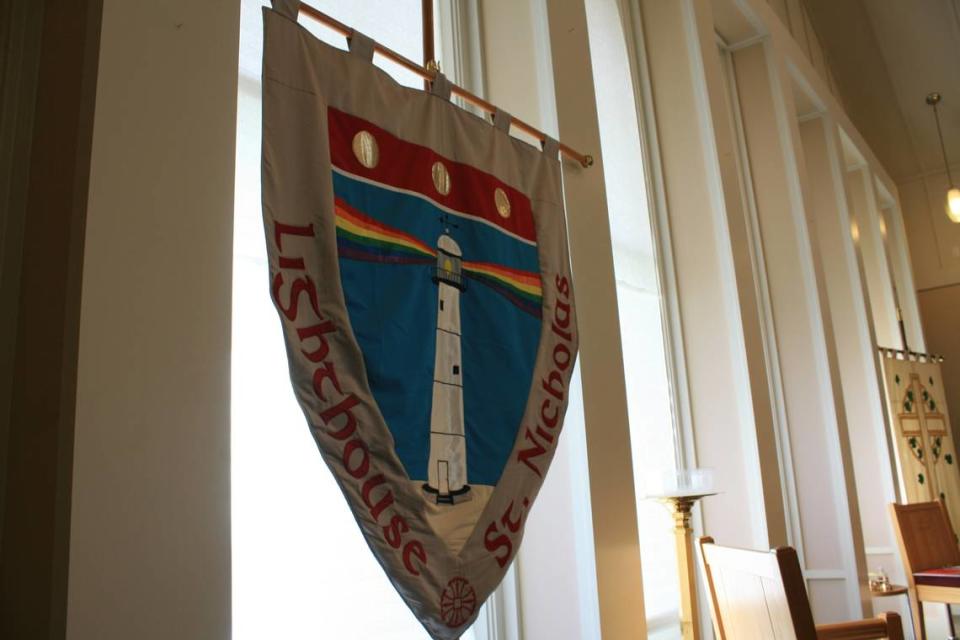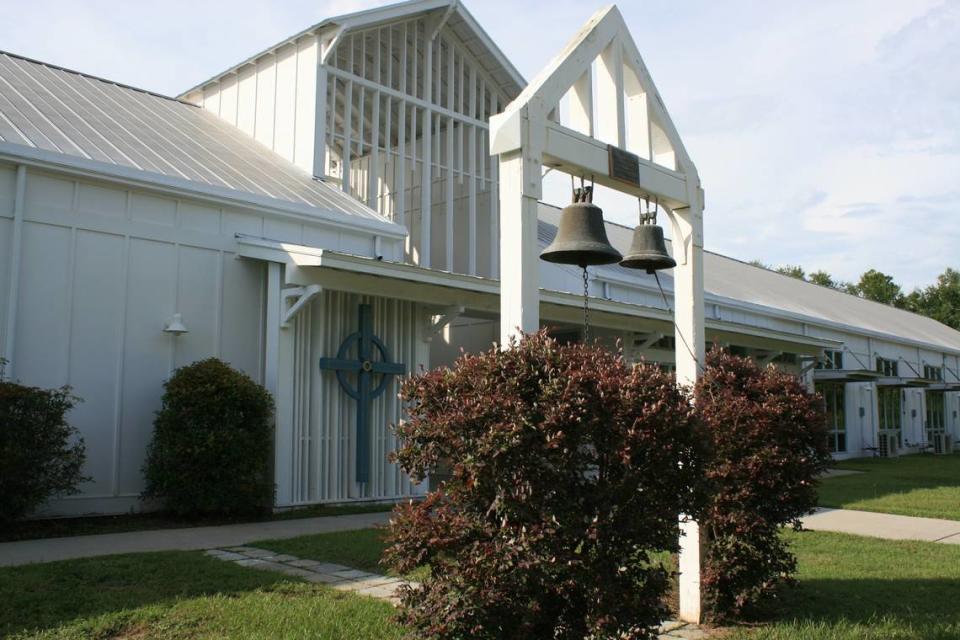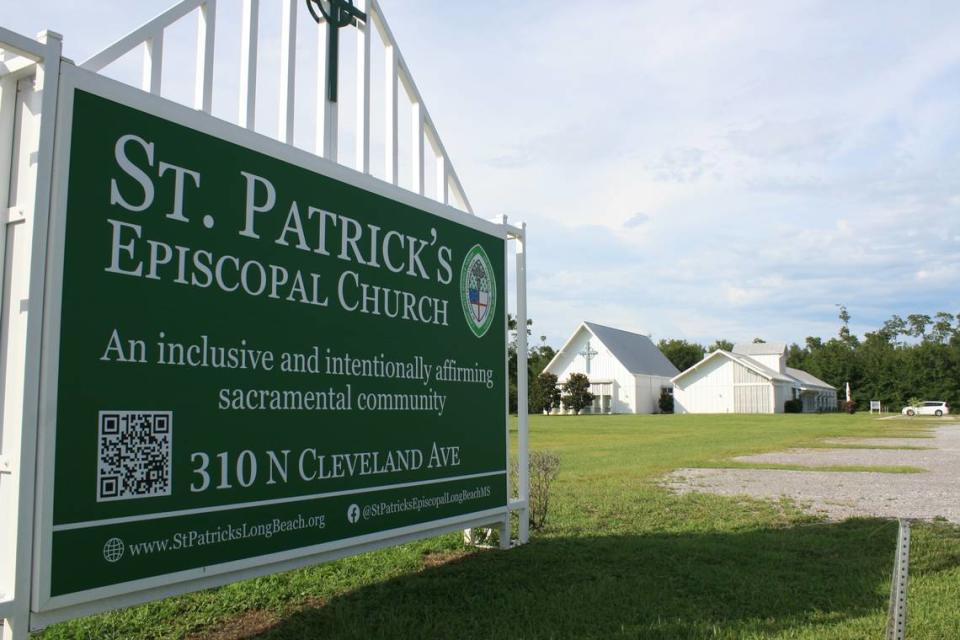‘Created in God’s image’: The story of the MS Coast’s deliberately LGBTQ+ affirming church
What sets St. Patrick’s Episcopal Church in Long Beach apart from many others is an emphasis on one word.
“Go into all the world and preach the gospel to all creation,” the Rev. Jane Bearden said, quoting Matthew 28:19-20 of the Bible. She continues, “That means all.”
St. Patrick’s is a church that not only welcomes members of the LGBTQ+ community to its congregation, it actively seeks them out.
It serves a calling for its roughly 30 parishioners, who drive in from all parts of the Mississippi Gulf Coast to attend its Sunday services. A few attend virtually from other states.
Bearden’s church is on the forefront of a modern schism in the Christian religious community over the place of members of the LGBTQ+ community in the temple. For her and the church, the theology is simple: all are welcome.
Advocating progressiveness
Bearden has been leading St. Patrick’s since 2018. She’s been a long-time advocate for progressiveness in the temple.
“Jesus was political,” she said. “I don’t shy away from it.”
At age 8 she walked out of a Baptist church in Louisiana that professed “Arab babies were all going to hell.” She said she never looked back.
As a child, she met a female Methodist preacher evangelizing social justice. From then on, Bearden said, she’s had a different way of looking at God and religion, one that headlines her sermon’s philosophies.
Her oldest son coming out as gay was another key moment. She recalls a children’s religious program that professed “God created you, God didn’t make any mistakes.”
In the early ‘90s, the AIDS epidemic was in full swing. Bearden, in Massachusetts, worked in the health care industry at the time and saw the way victims were shunned from the hospitals. Her church parish worked helping to house the victims.
Massachusetts was the first state to legalize gay marriage in May of 2004. It didn’t become legal in Mississippi until 2015. The Episocopal Church has been affirming toward the LGBTQ+ community since 1976.
A church in union
St. Patrick’s current state is the direct result of a union with another entity.
Seven years ago, the Rev. Errol Montgomery-Robertson founded the Lighthouse-St. Nicholas in Biloxi with a mission of providing acceptance and spiritual guidance to LGBTQ+ people on the Coast, fully accepting who they were and chose to love.
At Lighthouse-St. Nicholas’ first service, attendants poured out of the worship center, a repurposed real estate office’s conference room.
“The church was established as a means of spiritual urgent care,” said Jason Trumble, a leader at Lighthouse-St. Nicholas and now a member of the vestry at St. Patrick’s. “A landing place for LGBT individuals who had been shunned at their previous spiritual communities.”

When Bearden became the reverend at St. Patrick’s and moved to Mississippi, the church had already been losing parishioners and her style embodying social justice certainly didn’t help attendance matters, she said. A meeting between the two churches was held in 2019 and the two agreed on merging.
At first, Lighthouse-St. Nicholas moved in and operated as a separate entity within the same building. Montgomery-Robertson retired about a year later, and so the church he founded was absorbed into St. Patrick’s, binding the two as one.
“Lighthouse-St. Nicholas was designed to fail,” Trumble said. “It was in the hope that eventually our mission would become the mission of every church on the Coast. That we would be welcomed, that we didn’t have to have a specific LGBT-oriented church. That all other churches would be open to us.”
All means all
St. Patrick’s community includes folks identifying as straight, gay, lesbian and transgender. She’d serve someone with green skin, no questions asked, if they walked through the door, Bearden said.
The church is open to everyone, including to people who hate it.
There’s no shortage of that in South Mississippi, Bearden and Trumble said. It doesn’t mean they’re not going to call out those who are hateful toward the church’s ideals, but it also doesn’t mean they’re going to act exclusionary.
“Homophobic people are still beloved by God,” Bearden said. “We’re called to be welcoming to everyone.”
In the latest episode of someone showing hate to the church a few months ago, someone posed as a member of the congregation, removing and defiling a rainbow flag display.

‘Created in God’s image’
Bearden said there are certain steps one wouldn’t often think about in creating an environment welcoming to all. Cutting out patriarchal wordings and undertones are subtle ways to achieve this.
She, for example, doesn’t call parishioners “brothers and sisters,” instead using gender neutral terms like “children of God.”
St. Patrick’s tries to reach the people that Christianity has maligned for 2,000 years, Bearden said. In some cases, her church tries to reach people that have been actively pushed away from the faith.
She wants to give them a feeling of empowerment, a feeling that she hopes they can share with their friends and family in a way that’s reflective of the Church’s teaching.
“What we have to give them is a footing of a strong faith. One where they know God loves them, one where they’re created in God’s image and that they have nothing to be ashamed of,” Bearden said. “That they can hold their head high.”
Recently, a lesbian couple left St. Patrick’s and started attending another, more traditional Episcopal church. They were seeking somewhere with a youth group. But Bearden and Trumble were happy for them, that they had the strength and confidence to leave. Trumble said that means everything worked, the mission was fulfilled.
Bearden says St. Patrick’s isn’t going to have the most people seated in its chairs Sunday morning (the church has chairs not pews), especially compared to the Baptist church down the street. She said that’s OK. ,though, as they aren’t worried about a full parking lot.
“All we can really do is listen and care,” Bearden said.



